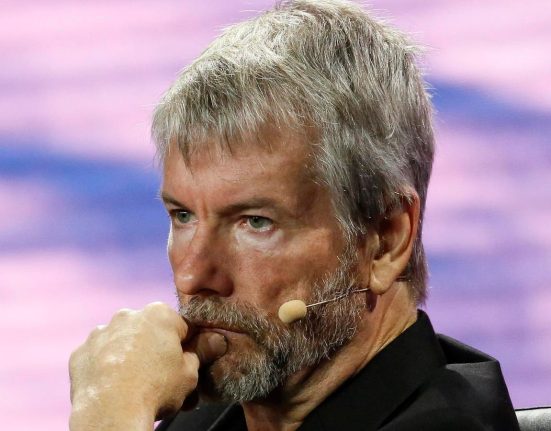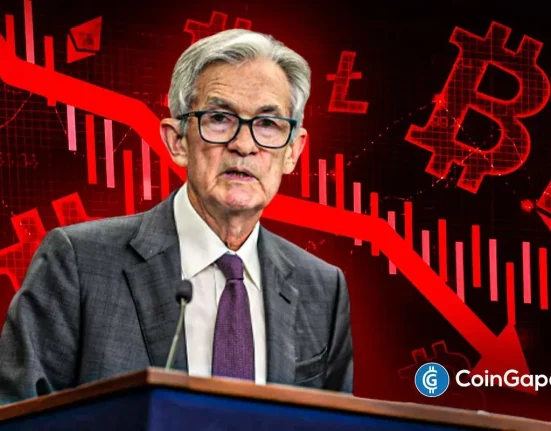Japanese pension funds are seeking to bolster returns in a volatile market by doing something many of them have never done before: appoint chief investment officers.
One of those funds, the Organization for Small & Medium Enterprises and Regional Innovation Japan, an agency that promotes smaller firms, established in April a position that’s equivalent to CIO.
It gave the job to Takashi Yamashita, who previously helped design the portfolio of Japan’s Government Pension Investment Fund, one of the world’s biggest retirement fund managers. He’ll oversee ¥12 trillion ($83 billion) in assets tied to a fund to aid small businesses, at the firm known as SME Support Japan.
Two other public-sector funds have introduced CIO or equivalent positions, putting those three executives in charge of more than $400 billion in investments combined. The appointments follow the government’s declaration in August 2023 of investment “principles” for asset owners, to improve risk management and help make more effective market deals.
“These CIO appointments signify a growing awareness of the need to enhance investment capabilities,” said Hironari Nozaki, a professor at Toyo University who researches topics such as banks and corporate finance. “It is crucial to appoint individuals with deep investment expertise, rather than assigning the role to conventional administrative executives,” he said, adding that the executives should be granted broad authority to decide on investments.
Nozaki was touching on the view that up to now, Japanese pension funds’ investment responsibilities were in large part held by senior administrators often with limited experience doing deals in financial markets.
Continuing market volatility — driven by prospects of further Bank of Japan interest-rate hikes and possible market turmoil sparked by President Donald Trump’s tariff policies and negotiations — is adding urgency to the nation’s pension reforms. And Japan is playing catch-up to other advanced economies: major retirement funds abroad began employing CIOs around the 1990s to elevate investment standards.
GPIF appointed a CIO relatively early for a Japanese fund, a decade ago. He oversaw the fund’s investments as it broadened its asset allocation away from a heavy focus on domestic bonds. As of the fourth fiscal quarter ended March 2025, GPIF’s cumulative investment return since fiscal 2001 exceeds ¥164 trillion, with annualized gains of 4.4%.
That contrasts with an average annual return of about 2% over the past 10 years at SME Support Japan, which allocates around 80% of its cash to domestic bonds it manages itself, according to a fund document. Under Yamashita’s leadership, the fund is reassessing its basic portfolio, an official said.
Meanwhile, two more funds with long names representing national and local government employees respectively have also appointed CIOs.
At the Federation of National Public Service Personnel Mutual Aid Associations, known as KKR and overseeing about ¥10 trillion, the job went to Akihiro Konishi, who was previously its head of fund management and before that worked at DBJ Asset Management.
The Pension Fund Association of Local Government Officials, with ¥36 trillion under management and called Chikyoren, also boosted oversight with the dual appointments of the equivalent of a CIO, and an independent risk officer. Tatsuya Morishita, who formerly worked at what‘s now Sumitomo Mitsui Trust, was tapped for the CIO-like post, after having served as a member of the investment team at the association since 2020.
Chikyoren and KKR have jointly developed model portfolios with GPIF, targeting 25% allocations each to domestic and foreign stocks and bonds. Their CIOs are now responsible for maximizing returns while working under strict risk control measures.
BOJ data show that as of December 2024, Japan’s public and corporate pension funds held a combined ¥513 trillion in assets, about the size of India’s annual economic growth. So far, GPIF, KKR and other public-sector entities have led the CIO push, but private-sector firms have been slower to act.
According to Japan’s Cabinet Secretariat, 14 public pensions and 140 corporate pension funds had adopted the government’s investment principles as of the end of May, a first step toward more aggressive cash allocation. But while a lack of uniform job titles in Japan’s fund industry makes it hard to estimate the number of CIOs, people in the market assume there aren’t many now.
While CIO-led organizations will still need to work within the constraints of basic portfolio guidelines, within that framework, “differences in investment execution will lead to performance dispersion over time,” said Toshiki Umeuchi, a researcher at NLI Research Institute.






